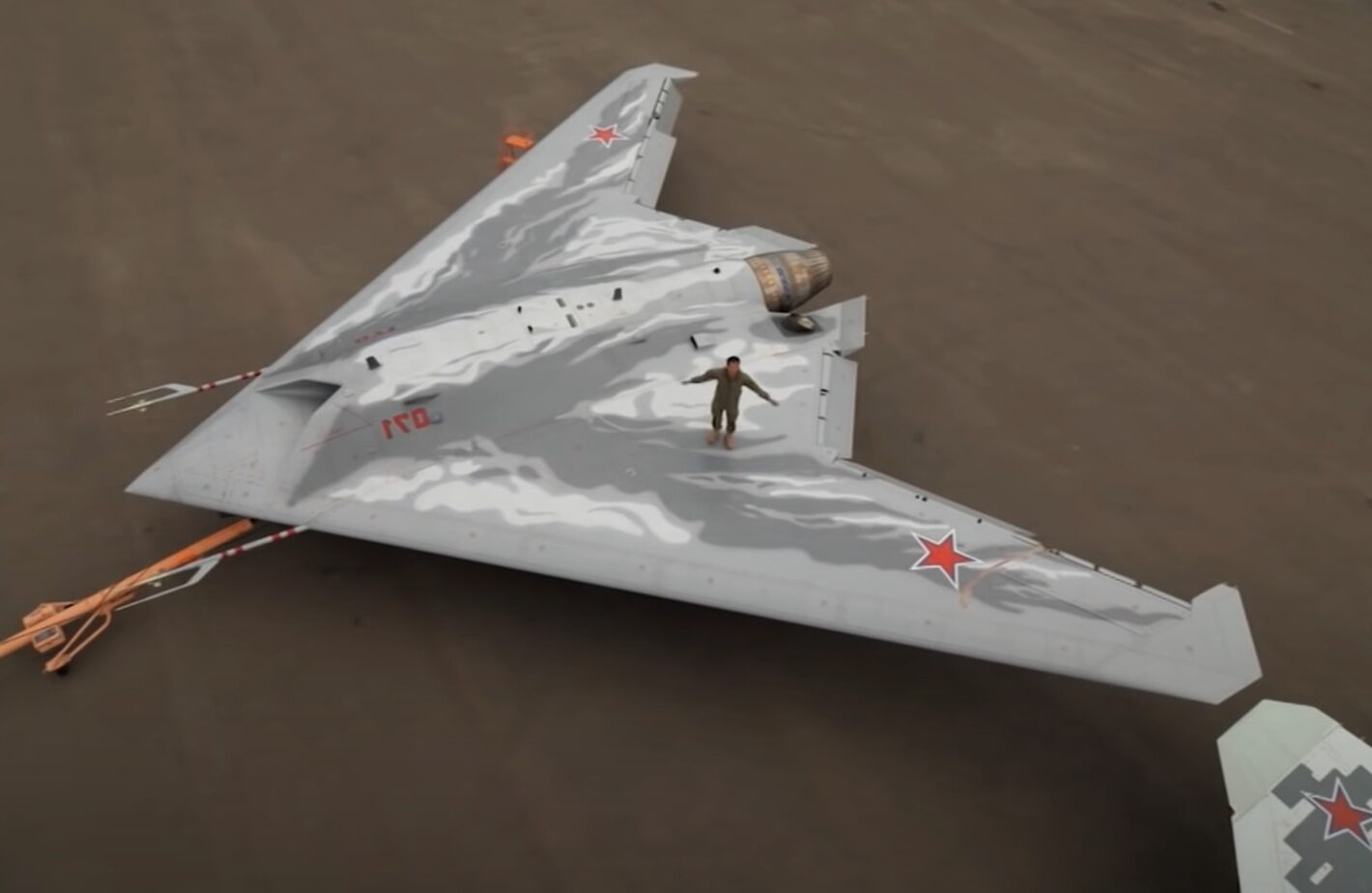Earlier this month, Russia’s S-70 “Okhotnik” (Hunter) stealth unmanned combat aerial vehicle successfully completed its first precision strike test. According to Russian state-run media, the drone test fired several air-to-surface missiles that struck ground targets. The precision-guided munitions the S-70 launched are the same weapons used by Russia’s fifth-generation Su-57 fighter jet. This test indicates that the Hunter drone will be employed alongside the stealth fighter, collaboratively advancing Moscow’s capabilities.
While Russian media did not identify the munition the S-70 drone used in its precision strike test, the missile may have been the Kh-59MK2 standoff cruise missile. According to Jane’s Defense, this variant could have a range of 500 km. It is “guided by an inertial navigation system corrected by Global Navigation Satellite System (GLONASS) and Global Positioning System (GPS) satellite navigation systems during the cruise phase, and an electro-optical digital scene matching area correlator system in the terminal phase.”
Similar to the Su-57
In 2019, the Russian Ministry of Defense published a video depicting the Hunter drone’s first flight. Shortly after the video’s release, the drone’s revised design was showcased at the International Aviation and Space Salon in Moscow. Over the next two years, the drone underwent a range of enhancements meant to advance its operational capabilities. Designed by Chkalov’s Novosibirsk aviation plant, a subsidiary of the Sukhoi Company, the drone features a stealthy nozzle configuration.
The new drone is also reported to sport a AL-41F turbofan engine, the same variant used to power the Su-57 fighter jet. This engine gives the Hunter drone a range of approximately 6,000 km. According to Russian sources, the drone weighs in at 20 tons, and its wingspan is 14 meters long.
The Hunter drone is reportedly smaller than the Su-57, yet the difference is supposedly minimal. According to a War Zone article, a Russian reporter was recorded walking across the wing of a Su-57 to the S-70 drone. The aircraft appear similar in size. The Hunter’s exterior is “covered in various intakes and exhausts, as well as antennas, and a forward-facing camera system under the central part of the forward fuselage,” according to the article. While the drone’s internal weapons bay has not been revealed, the Hunter’s recent precision test shows the UAV’s ability to launch munitions.
S-70 – A Multi-Role UAV
The drone’s advanced design makes it multi-role capable. It can be deployed on its own or alongside the Su-57 fighter jet. Joseph Trevithick describes the Hunter drone’s potential in The War Zone. “With the development of and expected concepts of operation for the S-70 so heavily tied to the Su-57, this can only raise questions about the future of the drone. Using Okhotniks as loyal wingmen could offer one possible way to expand the real combat capacity of what might ultimately only be a small fleet of operational Felons.”
Expected to officially roll out in 2024, the S-70 drone has the potential to elevate the Russian air force’s capabilities.
Maya Carlin is a Middle East Defense Editor with 19FortyFive. She is also an analyst with the Center for Security Policy and a former Anna Sobol Levy Fellow at IDC Herzliya in Israel. She has by-lines in many publications, including The National Interest, Jerusalem Post, and Times of Israel.

